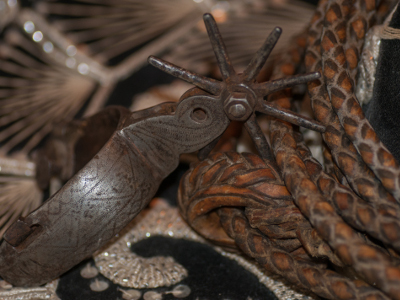
About Harris Roping Arena
Cattle roping in California had its start during the era of Spanish Rancheros. Whether the result of land grants from the Spanish Crown or otherwise, after the Spanish arrived in Mexico in 1519, ranches were established and stocked with cattle and horses imported from the Old World. Starting in 1769, a chain of 21 Franciscan missions eventually stretched from San Diego to San Francisco, marking the beginning of California's livestock industry. Indians and native cowboys, called vaqueros (from the Spanish word for cow), developed roping skills, using braided rawhide reatas (the root word for lariat).
By the mid-1700s, long trains of pack mules would transport the cattle products of meat, hides, and tallow (for making candles) to Mexico City and return with supplies. American ships began servicing California ports in the early 1800s and traded for the same products. Huge roundups were held to collect cattle, and the hard-riding vaqueros controlled the chaos. Known for expert horsemanship and roping skills, vaqueros were said to only dismount for a chance to dance with pretty girls.
During the early and mid-1800s, Americans poured into once Mexican-held lands (especially after the Mexican/American War, 1846-48) including California, and this phenomenon was boosted by the territory's 1849 gold rush that increased demand for beef. Many Anglo newcomers adapted to the vaquero style, and theses Californios rode ponies trained in a hackamore, swung a big loop with their hand-braided rawhide reatas, and took a wrap called a dally (from the Spanish dar la vuelta, to take a turn) around high saddle horns for leverage when roping cattle.
Cattle, owned by many different ranchers, were often allowed to mingle and graze on large sections of land. They were gathered in the spring for branding, ear-marking, and castration and again later in the fall for driving to market or railroad cattle towns for the same.
To avoid injury to the cattle, horses, or cowboys (loose translation of vaqueros), roping was done in small teams. Team roping allows the cattle to be held from both head and heels, allowing cowbiys to treat the cattle, and is still the most effective method of treating cattle.
Socialization was, and is, another compnent of team roping. Cowboys, as in olden days, still celebrate seeing each other and working together. The myth of the rugged western individual is really offset by camaraderie of barn raising, hoedowns, and – of course – team roping.
Experience this facet of the Old and New Cattle Ranching West. Observe team roping by two or three generations of cowboys and even rope a mechanical steer (from the ground) yourself. All at the Harris Roping Arena.
1:00 PM – 4:00 PM
Driving directions
From Mariposa, take 140 north toward Yosemite and turn right on Triangle Road.
Neighborhood map
4744 Triangle Road, Mariposa